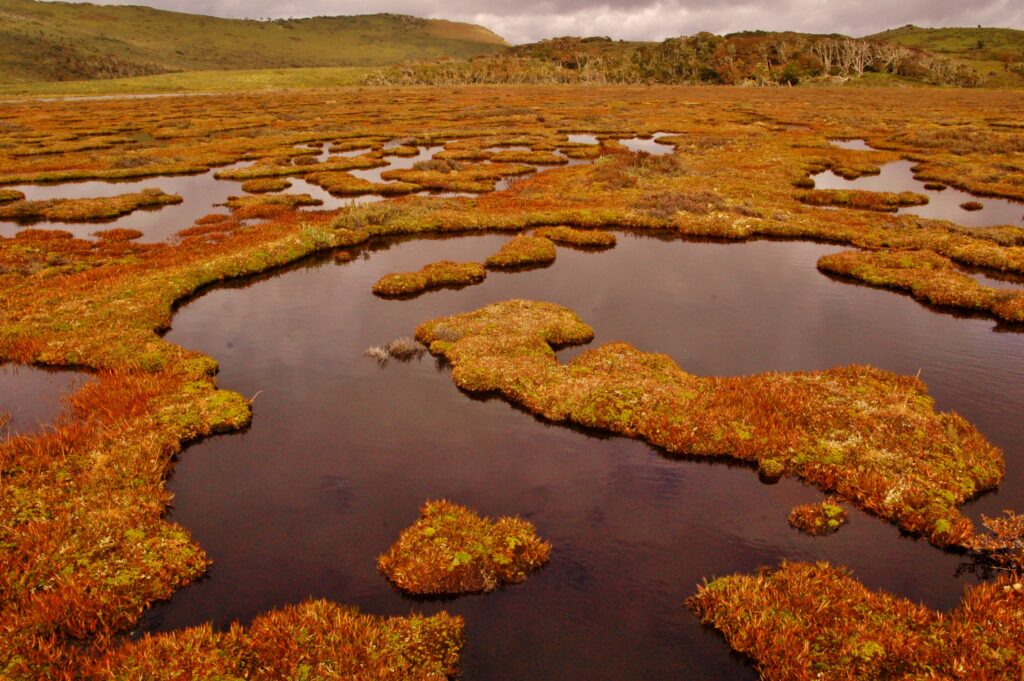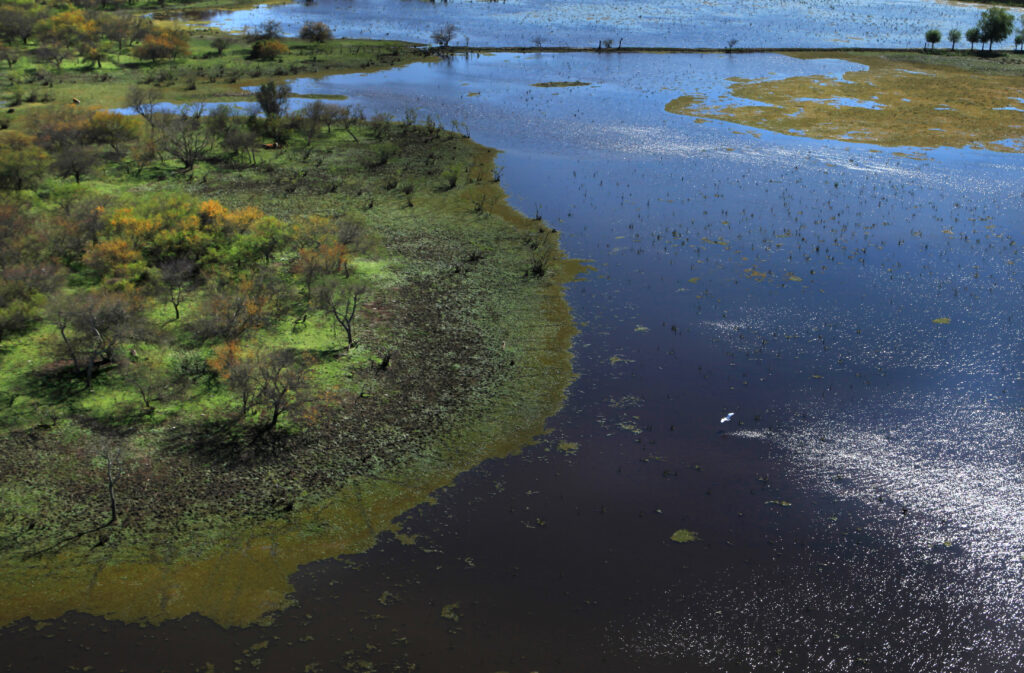What are wetlands?
Wetlands form where water meets land. They include mangroves, peatlands and swamps; rivers and lakes, deltas, floodplains and flood forests, rice paddies, and also coral reefs.
Peatlands
Peatlands are wetlands with a thick layer of moist soil composed of dead or decaying plant material. Peatlands include peatlands and other ecosystem types such as tropical swamp forest peatlands and tundra peatlands. Peatlands account for more than half of the planet’s wetlands and cover 3% of the total global land area.

Rivers and deltas
A river is a natural watercourse, often with pure water, that flows into an ocean, lake, sea or other river. Rivers originate from rainfall in the upper watershed and flow to the lower watershed forming streams and creeks. Deltas are found in the low-lying areas reached by rivers where water flows down slowly and disperses into vast expanses of wetlands (such as floodplains) and shallow waters.

